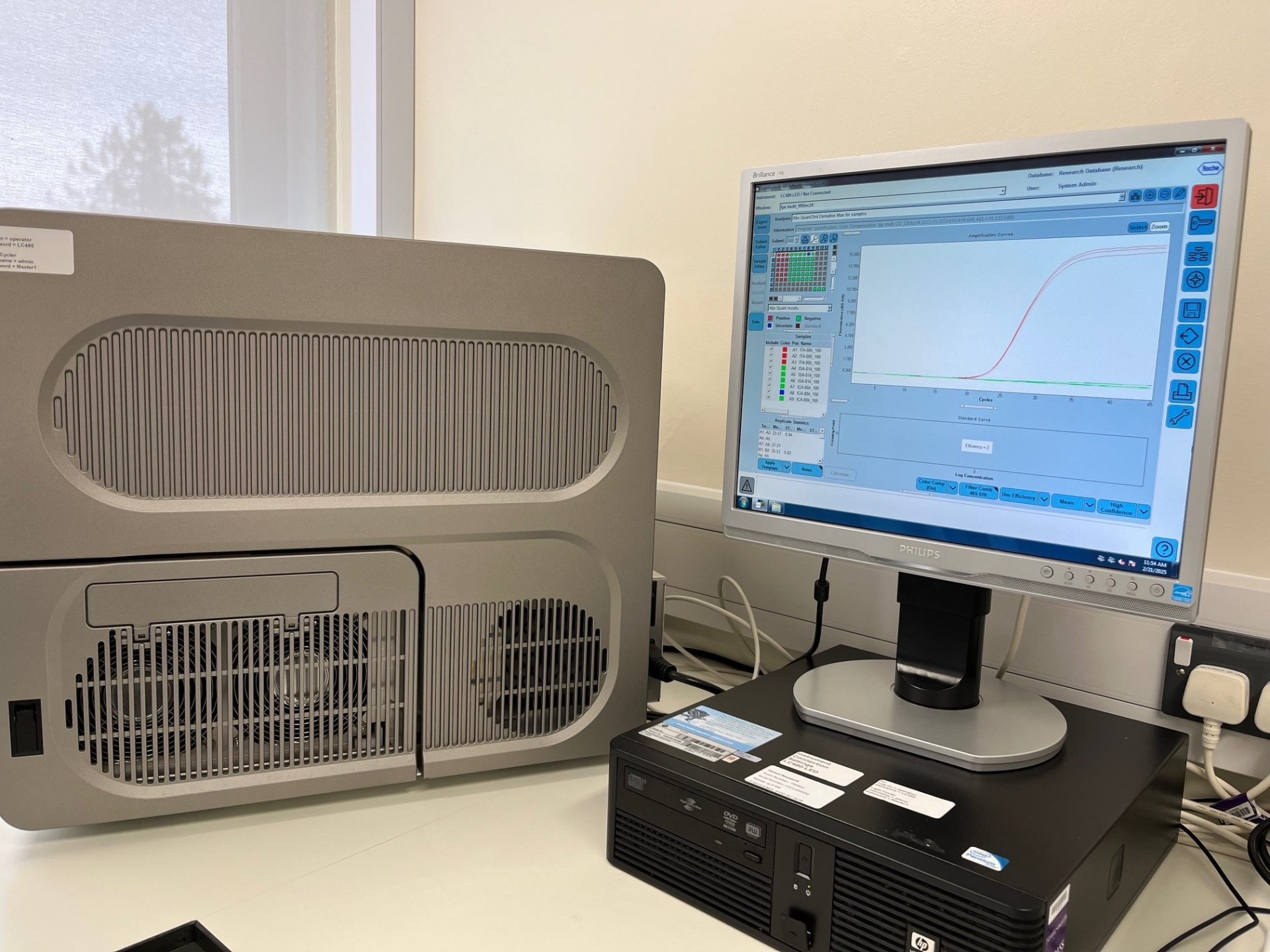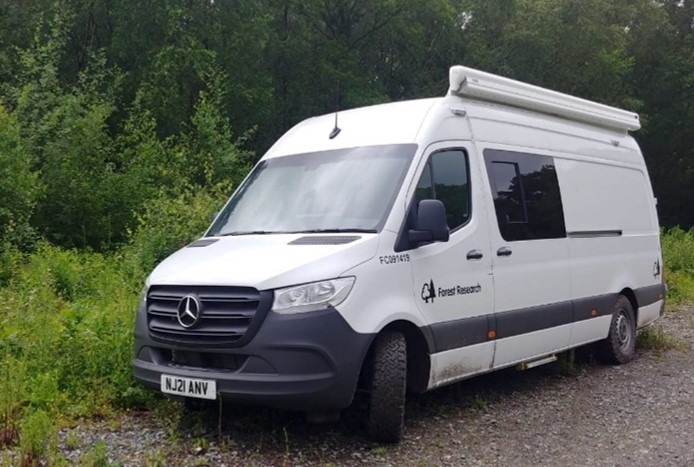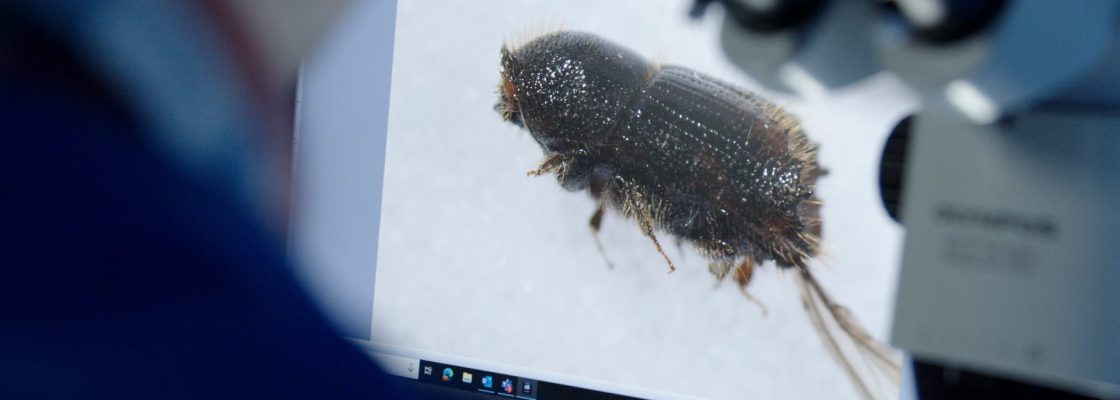Summary
Efforts to eradicate Ips typographus in the UK are currently underway, with a key focus on surveillance through trapping and surveying forests for signs of the beetle.
When suspected Ips beetles are found, they are sent to the laboratory for identification by entomologists at FR. While adult beetles can generally be identified using their morphology, this is not always possible if specimens are damaged, degraded, or contain immature life stages (i.e., larvae or pupae).
Molecular methods – those that use DNA to identify species – can be valuable tools to provide accurate diagnoses in these cases. However, sensitive molecular techniques for detecting Ips typographus and other Ips species are currently lacking.
This project aims to develop assays that can be implemented both in the lab and field for rapid and accurate diagnosis of Ips typographus, increasing our diagnostic capabilities at FR.
Research Objectives
Two different molecular tests are being developed for the diagnosis of Ips typographus which can be used in different scenarios.
Test one – a highly sensitive qPCR to diagnose Ips typographus, Ips cembrae, and Ips sexdentatus in the laboratory
These three species can often be confused with each other, especially in immature life forms.
This molecular test will be able to distinguish between the three species using DNA that has been extracted from specimens, providing a positive or negative diagnosis of the pest within 24 hours of receiving the sample. It will be sensitive enough to provide results for partial or degraded specimens, swabs taken from galleries, and frass produced by the beetle.

This machine (Roche LightCycler 480) is used to perform the qPCR for diagnosing Ips typographus, Ips cembrae and Ips sexdentatus. The red exponential curves indicate a positive result for one of the three target species.
Test two – a field-based test for Ips typographus for use in field surveys or at ports
A technique called Recombinase Polymerase Amplification (RPA) will be employed which allows DNA amplification to occur at a low constant temperature.
The method can be paired with a lateral flow device, or a fluorescent output, so positive and negative results can be visualised with portable equipment. The process will not require technical expertise, and results can be observed in under 20 minutes, greatly reducing the time taken to identify to an outbreak site or intercept infested plant material at ports.

A Forest Research mobile laboratory van.
Forest Research’s mobile lab van is utilised by diagnosticians to obtain a quick diagnosis of a pest or pathogen while surveying in the field. The lab van will be used for this project to set up the equipment needed to perform the molecular test for diagnosing Ips typographus in the field.
Funding & Partners
-
 DEFRA
DEFRA -
 Fera Science
Fera Science

